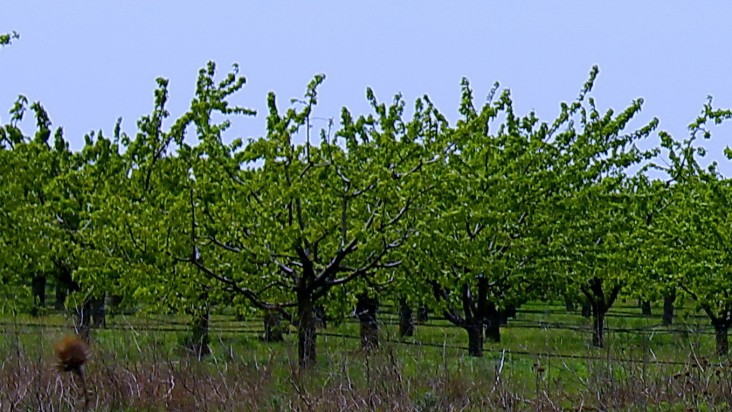Speeches Shim

September 2016—The Burgunske Farm in Ukraine’s Kherson oblast may finally realize a long-held ambition to become the leading fruit producer of the region. The farm increased its area of irrigated land fourfold—from 115 hectares to between 430 and 545 hectares—by constructing a new water supply pipeline.
The farm is located in an area of southern Ukraine that experiences hot summers and mild winters, conditions very favorable for agriculture. The area is famous for its fruit, particularly its grapes, and could serve as a regional “fruit basket” were it not for insufficient irrigation limiting its harvest potential.
During Soviet times, Burgunka village had more than 1,100 hectares of irrigated land, but it fell into disuse and disrepair with the collapse of the old political system. “After the collapse of the Soviet Union, the irrigation system was destroyed, pipes were dug up or stolen,” said Anatoly Polonsky, head of Burgunka village.
Water has never been in short supply since the village sits on the banks of the Dnipro River. Ironically, many village residents who were left without irrigation water lived near the riverbank. The problem was that the old water supply pipeline that connected the pumping station with the water storage pond was inefficient and extremely costly.
“We planned to restore the irrigation system completely, but to do it on our own was impossible,” said Andrey Yurkovsky, the director of Burgunske Farm.
The farm turned to the USAID Water for Agri Sector project in 2015, winning a grant to construct the water supply pipeline after committing to pay 30 percent of the project costs out of its own budget. With USAID assistance, the enterprise laid 6,700 meters of new pipes and rebuilt the pumping station.
Now with the new system, pumping time is reduced by half and the company receives 200 cubic meters of additional water per hour. With improved irrigation, Burgunske Farm is planting new orchards and vineyards to double its fruit and vegetable production.
With an increased harvest come more jobs and better salaries. Thus far, the enterprise has hired 30 new employees and expects that 1,200 people will eventually benefit from the project.
The rest of Burgunske village also benefited from the new infrastructure: 126 private village farms and households obtained access to the new aqueduct to irrigate their personal land plots as well. The Burgunske Springwell service cooperative established on the base of the farm with USAID help will operate and maintain the new irrigation system.
USAID’s Water for Agri Sector project works to refurbish water infrastructure systems and improve water supply for rural residents as well as for agricultural production in selected communities in Kherson oblast. The project, which runs from January 2015 through January 2017, has trained 62 people on the creation and operation of water supply management cooperatives and has helped create and register two cooperatives. Five improved water supply sites are currently operating.
LINKS
Follow @USAIDUkraine, on Facebook

Comment
Make a general inquiry or suggest an improvement.